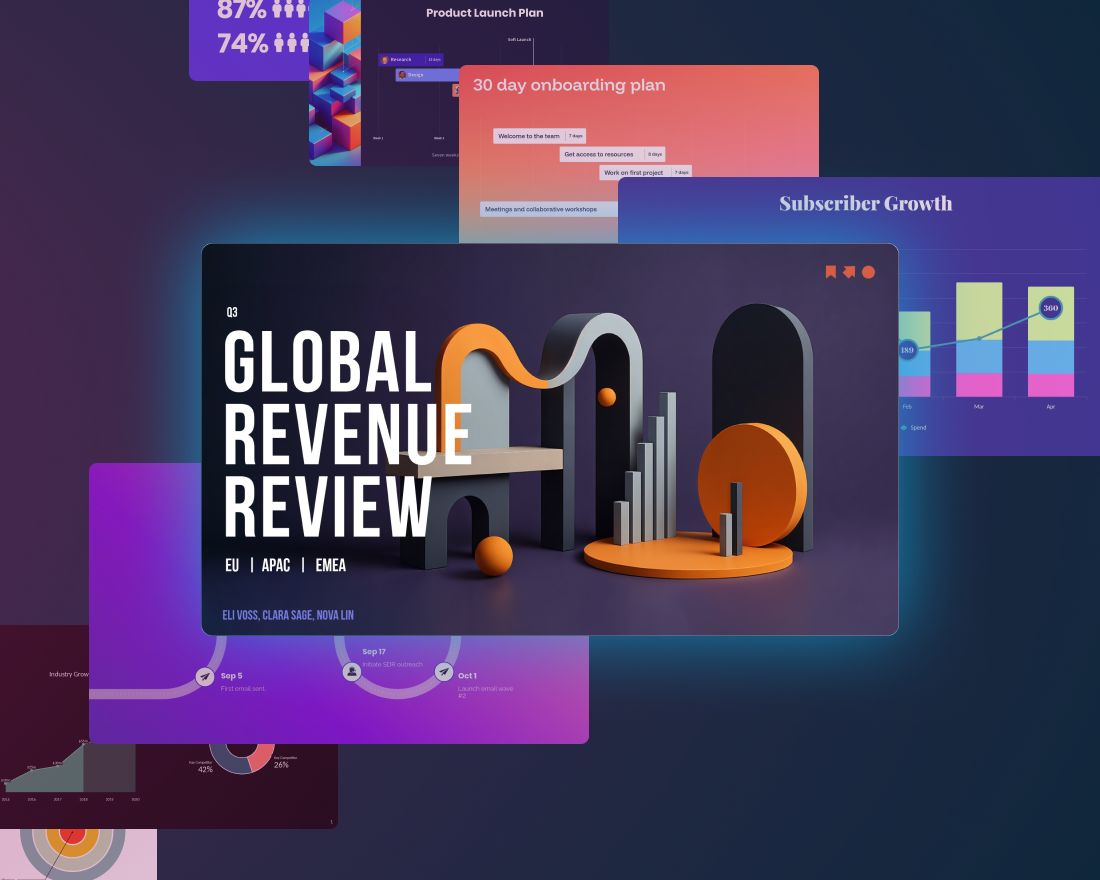
In the face of the pandemic that consumed 2020, we saw an uptick in medical presentations. And rightfully so. The world was in a state of panic over the unknown of a new virus, people were craving information, and organizations like the World Health Organization (WHO) were scrambling to provide data and resources to help address questions and concerns. Whether it was news stories, or medical research, the world needed to understand what we were up against with COVID-19. Naturally, presentations helped to deliver that information. But this isn’t the first time a virus or disease has rattled communities, and it’s certainly not the first time professionals have used medical presentations to educate the masses. Medical presentations are a helpful tool for medical professionals, research clinics, and organizations to help inform and educate their communities on a wide variety of urgent topics. This can include patient treatment, clinical trial research and results, training for medical staff, general education, medical research, or important data regarding diseases.
While medical presentations tend to be fundamentally different from normal presentations in that they include critical and sensitive information, there are still design best practices just like any other deck. That said, what works for a sales pitch might not resonate well with a medical presentation.
Keep these five things in mind when you want to present effectively on urgent medical presentation topics.
Consider your audience
You may be presenting to a group of doctors within your organization to get the team up to speed on new practices, sharing treatment plans with a patient, or educating the community on new health threats. How you structure your medical presentation is not a one-size-fits-all situation. How you talk to internal staff, versus how you would deliver information to a scared patient is not the same. When you’re crafting your message, consider your audience, and tailor the narrative to their overarching concerns and needs.
Keep things straightforward
Unless you’re presenting to third year residents, your audience probably won’t be able to digest complicated medical terminology. It’s important to avoid medical jargon, complex definitions, or overcomplicated explanations that will confuse your audience. Instead, break things down in layman's terms and relate the information back to your audience and how it will affect them. Keeping things straightforward, and clear, will help your audience digest and process the information quicker. The end goal is that your audience leaves with clarity, feeling more educated on the topic and its urgency.
Use icons to reflect the urgency of the situation
The use of visual aids, such as compelling images or meaningful icons, can help paint the picture of urgency in any presentation. Things like clocks, alarms, lightning bolts, or exclamation points can depict emergencies and symbolize something significant in your presentation. The use of impactful visuals will help engage your audience and let them know what they absolutely need to pay attention to. It helps you control the narrative, and highlight any pertinent information or key takeaways.
Beautiful.ai’s free library of hundreds of thousands of images and icons can help take your presentation to the next level. Our custom icons were thoughtfully created by one of our in-house designers, and are a great way to compliment your data and add urgency to your slide.
Hit them with the facts
In most medical presentations, factual data carries the slides. Whether it’s a survey, research results, or statistics about a particular disease, numerical data will help people understand the urgency or severity of the topic. For example, it was common for nearly every COVID-19 presentation or article to include statistics of the percentage of the population infected, which regions were seeing the greatest spikes in cases, death tolls by county, and data relevant to high-risk individuals. While the numbers may not always be fun— especially as they pertain to a pandemic— they paint a clear picture of what the audience needs to understand. Seeing scary statistics can put into perspective just how real the situation is.
Using the proper charts, graphs, or infographics allows you to dictate exactly what information the audience is consuming. Data visualization with infographics can also help the audience understand and retain otherwise complicated data. However, even with the best charts, you can still overwhelm the audience with information. Opt to include only the most relevant info and useful data.
Allow time to process
Regardless of what you’re presenting— big or small— you should leave time at the end for questions. Medical presentations can be paralyzing, and your audience will likely be seeking more answers. Give your audience a minute or two following the presentation to process what they learned, and then give them a chance to ask questions. You may need to elaborate on specific slides, or revisit a piece of data, to help provide clarification. When it comes to urgent topics, you want your audience to leave feeling more knowledgeable and at ease than they were prior to tuning in.






.png)
